All issues

Volume 36 (2002)
- Issue 83 Pages 2-
- Issue 82 Pages 5-
- Issue 81 Pages 7-
Volume 36, Issue 82
Displaying 1-6 of 6 articles from this issue
- |<
- <
- 1
- >
- >|
-
Hideo TAKINO2002 Volume 36 Issue 82 Pages 5-10
Published: July 31, 2002
Released on J-STAGE: March 12, 2010
JOURNAL FREE ACCESSDownload PDF (6690K) -
Teruki KOBAYASHI, Masanori KUNIEDA2002 Volume 36 Issue 82 Pages 11-17
Published: July 31, 2002
Released on J-STAGE: March 12, 2010
JOURNAL FREE ACCESSThis paper clarifies the mechanism of determining the tool electrode wear ratio in electrical discharge machining (EDM) using spectroscopic measurement of the vapor density of the tool electrode material. The relative density of copper vapor in EDM arc plasma was obtained from radiant fluxes emitted from the arc plasma and the temperature of the arc plasma which was obtained from the radiant fluxes of two different wavelengths using the line pair method. It is known that a longer pulse duration results in a lower tool electrode wear ratio and a thicker carbon layer precipitated on the tool electrode surface. On the other hand, the density of copper vapor evaporated from the tool electrode surface was found to be lower when the carbon layer was thicker. Thus it was concluded that wear of the tool electrode is prevented owing to the protective effect of the carbon layer.View full abstractDownload PDF (2322K) -
Method of Precision Adjustment of EDM Axis and Prehole Axis Made by Laser Beam MachiningShin-ichiro KUBOTA, Yoshiyuki UNO, Hirokazu KURIBAYASHI, Seiichi YOKOM ...2002 Volume 36 Issue 82 Pages 18-24
Published: July 31, 2002
Released on J-STAGE: March 12, 2010
JOURNAL FREE ACCESSThis paper deals with a method of precision adjustment of the EDM axis and prehole axis made by laser beam machining. In the previous paper, we proposed a new method for boring a microhole with a high aspect ratio over 10 for superfine-grain carbide, in which EDM and YAG laser beam machining were combined. We clarified that it was possible to bore a 100-μm-diameter hole for superfine-grain carbide of 1mm thickness. However, it is difficult to precisely adjust both axes of the prehole and the electrode in this method, because when the electrode does not fit with the axis of the prehole, it is impossible to bore a high-precision hole. Alignment error inevitably occurs during mounting and dismounting of the workpiece, which leads to the deterioration of the finished hole. In this study, the angle measuring system composed of a He-Ne laser and goniometer is used and the tilt angle of the prehole is corrected using this measuring system. The main conclusions obtained are as follows. (1) It is possible to adjust the tilt angle of the prehole bored in a workpiece by controlling the laser intensity through the micro deep hole. (2) In fine deep boring, a highly perpendicular hole with a high aspect ratio value over 10 can be obtained using the proposed method.View full abstractDownload PDF (9664K) -
Effect of Mixing Powder into Working Fluid for Working SurfaceMasaaki SANO, Masahiko HIHARA, Koji YATSUSHIRO, Naotake MOHRI2002 Volume 36 Issue 82 Pages 25-32
Published: July 31, 2002
Released on J-STAGE: March 12, 2010
JOURNAL FREE ACCESSThe purpose of this report is to produce a high-quality surface by electrical discharge machining. In this experiment, a hard layer could be generated on die steels by mixing Ti powder into the working fluid. The layers modified by electrical discharge machining were evaluated based on surface roughness, X-ray residual stress measurement and SEM observation. The insults of the experiment are as follows: 1) A hardened layer was formed by mixing Ti powder into the working fluid. The layer contained TiC and Fe, in which, the Ti content is higher at the part closer to the machined surface. The hardness increases with Ti powder concentration. 2) The residual stress on the working surface by mixing Ti powder into the working fluid was tensile stress. The residual stress was released by heat treatment at temperatures over 600°C. At that time, while the hardness of the surface decreased, the toughness increased.View full abstractDownload PDF (10715K) -
Haruki OBARA, Tsuyoshi OHSUMI, Masatoshi HATANO2002 Volume 36 Issue 82 Pages 33-38
Published: July 31, 2002
Released on J-STAGE: March 12, 2010
JOURNAL FREE ACCESSA new resistorless power supply equipped with twin generators is developed for electrical discharge machining Each generator has no resistor but has a coil, a group of transistors and diodes to restrict the discharge current The two generators are operated alternately, thus generating two triangular currents with a time lag. The two currents are summed on a tool electrode, and consequently, a smooth current is generated. This power supply has the following advantages: 1) There is no power dissipation of the resistors. 2) The required power supply is small. 3) The current wave is smooth and it is easy to generate not only a high current but also a low current for finish machining. 4) It is easy to change the current waveform and the rise time of the current, by controlling the on/off duty ratio of the transistors. The principle and tested results of this power supply are described.View full abstractDownload PDF (609K) -
High Accuracy FinishingYuki KITA, Masao MURAI, Akiyoshi KAWAHARA, Akihiro SAKURAI2002 Volume 36 Issue 82 Pages 39-43
Published: July 31, 2002
Released on J-STAGE: March 12, 2010
JOURNAL FREE ACCESSDownload PDF (5470K)
- |<
- <
- 1
- >
- >|